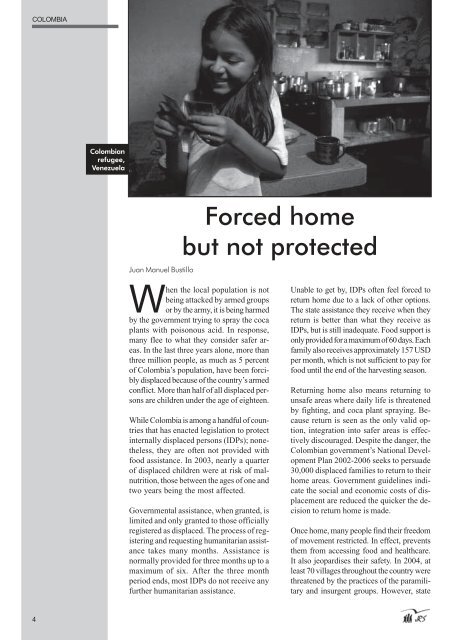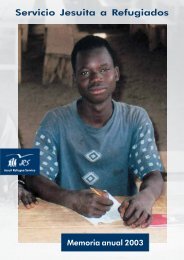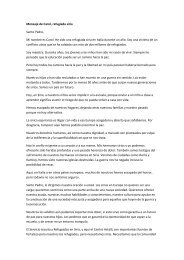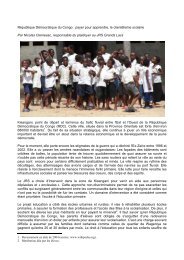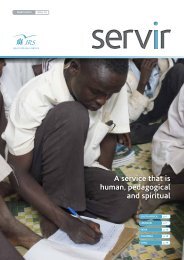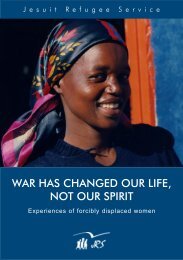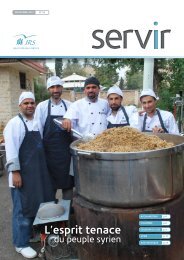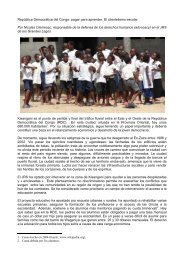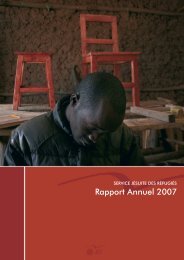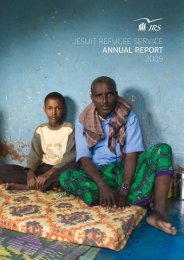Create successful ePaper yourself
Turn your PDF publications into a flip-book with our unique Google optimized e-Paper software.
COLOMBIA<br />
Colombian<br />
refugee,<br />
Venezuela<br />
Juan Manuel Bustillo<br />
Forced home<br />
but not protected<br />
When the local population is not<br />
being attacked by armed groups<br />
or by the army, it is being harmed<br />
by the government trying to spray the coca<br />
plants with poisonous acid. In response,<br />
many flee to what they consider safer areas.<br />
In the last three years alone, more than<br />
three million people, as much as 5 percent<br />
of Colombia’s population, have been forcibly<br />
displaced because of the country’s armed<br />
conflict. More than half of all displaced persons<br />
are children under the age of eighteen.<br />
While Colombia is among a handful of countries<br />
that has enacted legislation to protect<br />
internally displaced persons (IDPs); nonetheless,<br />
they are often not provided with<br />
food assistance. In 2003, nearly a quarter<br />
of displaced children were at risk of malnutrition,<br />
those between the ages of one and<br />
two years being the most affected.<br />
Governmental assistance, when granted, is<br />
limited and only granted to those officially<br />
registered as displaced. The process of registering<br />
and requesting humanitarian assistance<br />
takes many months. Assistance is<br />
normally provided for three months up to a<br />
maximum of six. After the three month<br />
period ends, most IDPs do not receive any<br />
further humanitarian assistance.<br />
Unable to get by, IDPs often feel forced to<br />
return home due to a lack of other options.<br />
The state assistance they receive when they<br />
return is better than what they receive as<br />
IDPs, but is still inadequate. Food support is<br />
only provided for a maximum of 60 days. Each<br />
family also receives approximately 157 USD<br />
per month, which is not sufficient to pay for<br />
food until the end of the harvesting season.<br />
Returning home also means returning to<br />
unsafe areas where daily life is threatened<br />
by fighting, and coca plant spraying. Because<br />
return is seen as the only valid option,<br />
integration into safer areas is effectively<br />
discouraged. Despite the danger, the<br />
Colombian government’s National Development<br />
Plan 2002-2006 seeks to persuade<br />
30,000 displaced families to return to their<br />
home areas. Government guidelines indicate<br />
the social and economic costs of displacement<br />
are reduced the quicker the decision<br />
to return home is made.<br />
Once home, many people find their freedom<br />
of movement restricted. In effect, prevents<br />
them from accessing food and healthcare.<br />
It also jeopardises their safety. In 2004, at<br />
least 70 villages throughout the country were<br />
threatened by the practices of the paramilitary<br />
and insurgent groups. However, state<br />
4


